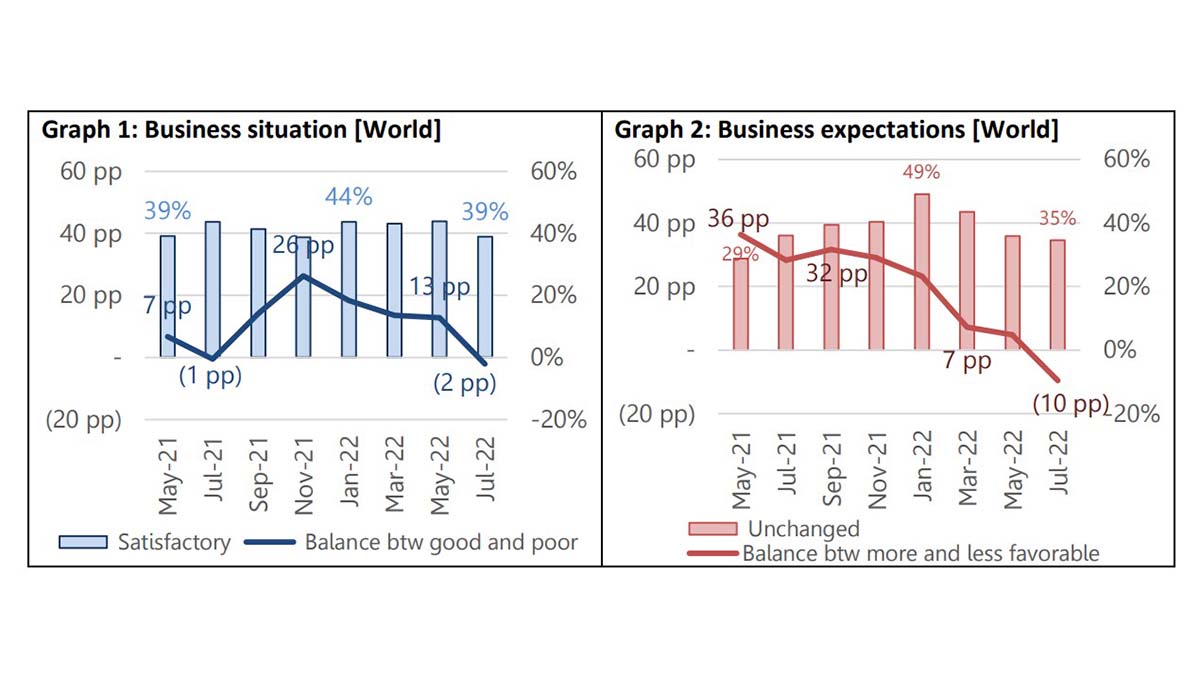International Textile Manufacturers Federation (ITMF), conducting a survey with companies about their business situation, business expectation, order intake, order backlog, and capacity utilization rate since May 2021, published the 15th ITMF Corona-Survey. The survey results show that the business situation plunged into negative territory in July 2022. The business situation is worse in Asia than in the rest of the world while textile machinery is the only segment still in positive territory. Business expectations have also turned negative for the first time since the start of the survey in May 2021 while South-East Asia and South America are relatively more optimistic, downstream segments as well.
Expectations have turned negative in all textile segments except for textile machinery producers
Although order intake is weakening globally, it maintains to be in positive territory. Expectations have also turned negative in all segments except for textile machinery producers and it is stated that a difficult period is to be expected ahead. Order intake is deteriorating in all Asian regions while maintaining its stability in North America, South America, and Africa.

The falling in order backlog is expected to continue until March 2023
Order backlog has been slightly decreasing in the past few months, from a maximum of 3.1 months in March 2022 to 2.9 months in July and it is expected to continue falling until March 2023. The capacity utilization rate has been stagnating since the beginning of 2022, on average. This indicator is rising in Africa and North and Central America. In addition to fibre and home textile producers and spinners, South Asia reports a strong decrease in capacity utilization.
The prospects of weakening demand caused by surging inflation are worrisome
While high prices for raw materials, energy, and logistics are still regarded as major supply-side concerns, they have somewhat eased compared to May 2022. The prospects of weakening demand caused by surging inflation are evaluated as a worrying situation.


